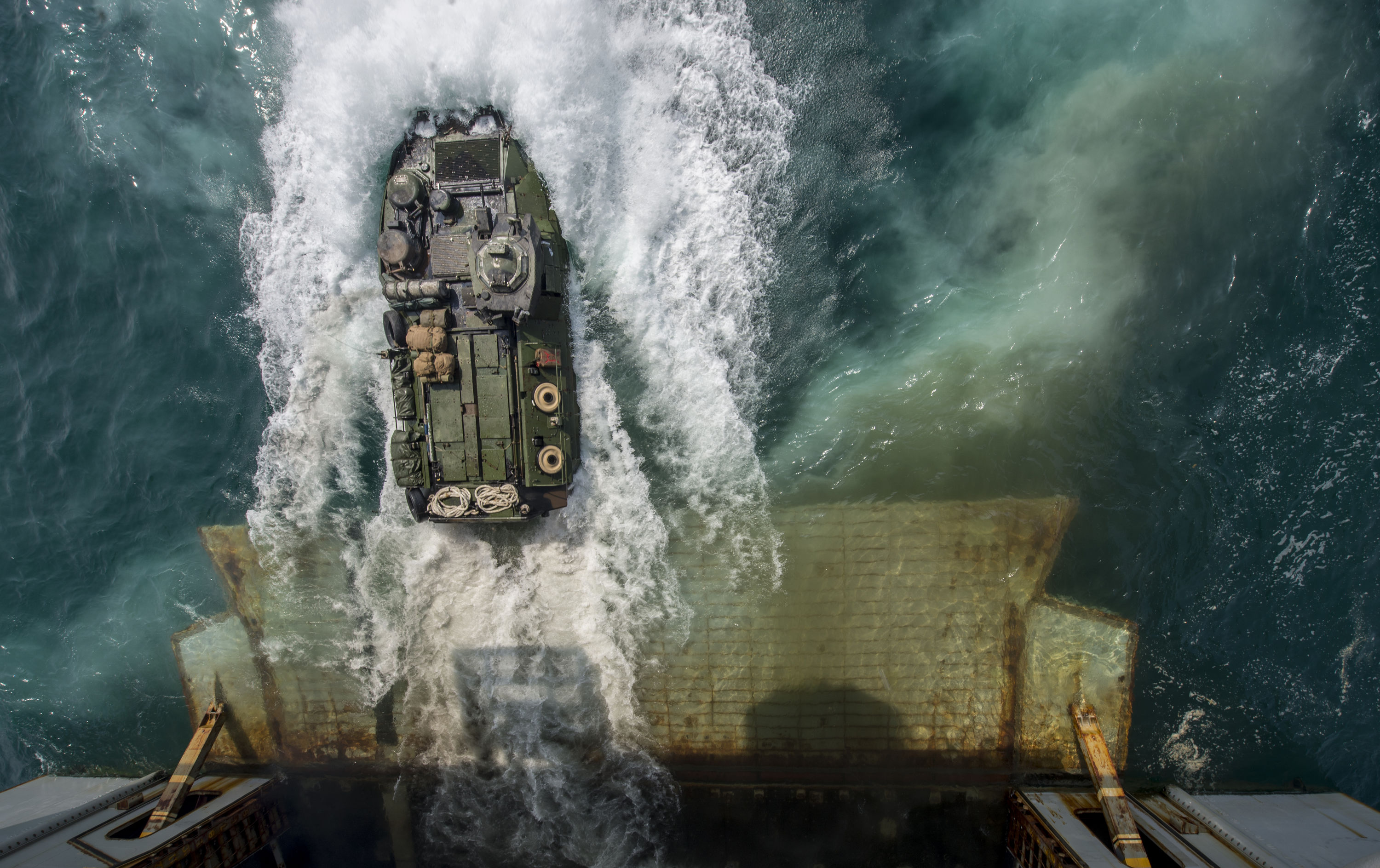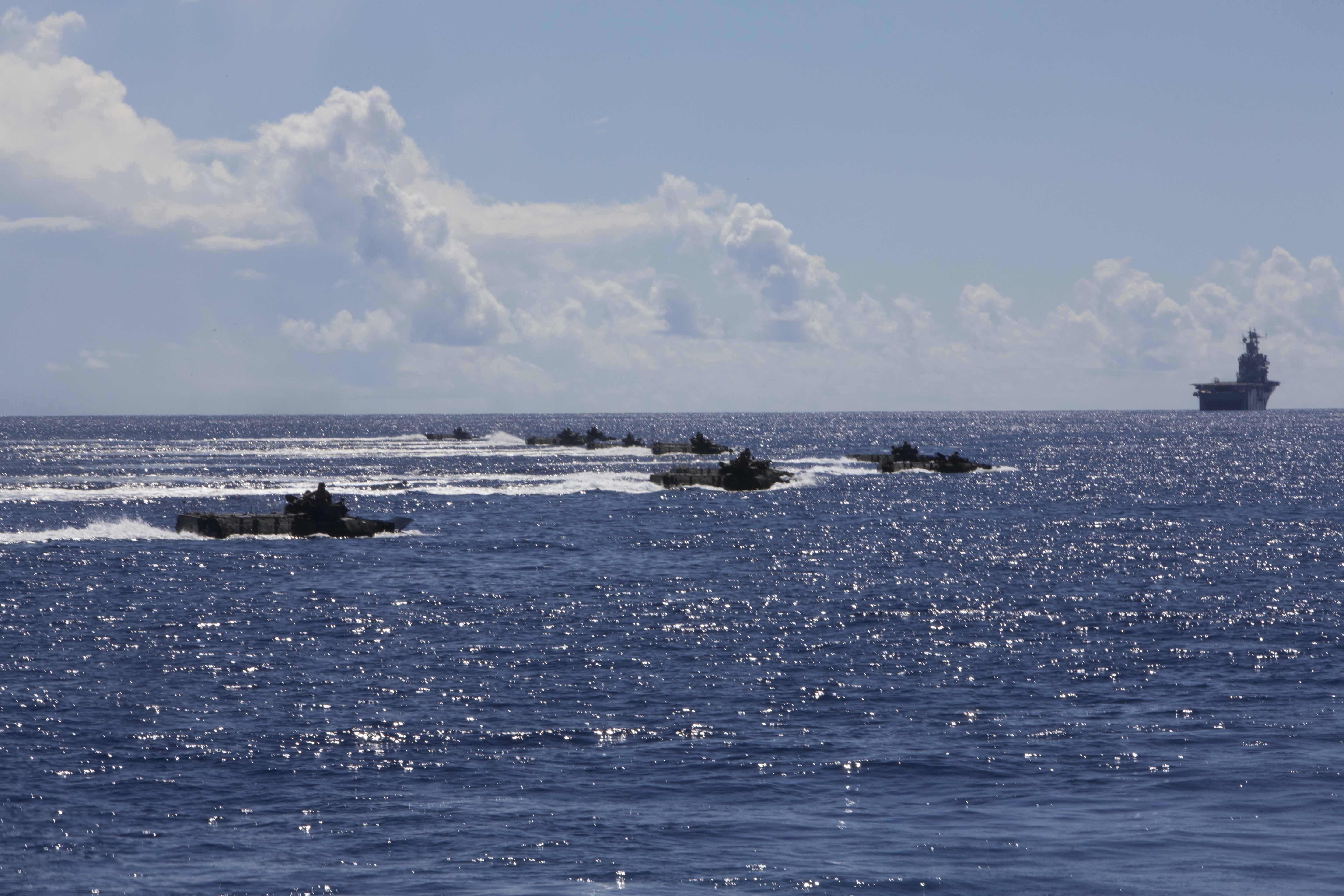
In an aggressive move to reclaim its maritime expeditionary heritage after 13 years of grinding land-based combat and counterinsurgency/nation-building, the Marine Corps has published a new capstone conceptual document that charts a new course into the future.
Expeditionary Force 21 draws heavily on the Corps’ historic roles as a forward-deployed or fast-responding force willing and able to perform a wide range of duties, from humanitarian assistance/disaster relief to enhanced security for U.S. embassies and interests, to swift, small-scale raids or assaults to stifle emerging conflicts, up to forcible entry amphibious attacks to pave the way for, or as part of a major joint combat operation.
“Expeditionary Force 21 is our vision for designing and developing the force that will continue to fulfill these responsibilities,” Gen. James Amos, the Marine Corps Commandant, said in the document’s forward. “Through Expeditionary Force 21 we will chart a course over the next 10 years to field a Marine Corps that will be the right force, at the right place, at the right time,” Amos said, using a phrase that is repeated in the 50-page document.
EF-21 also is fully cognizant of the current constrained budget situation. Amos said it was not just a vision, but “an actionable plan and a disciplined process to shape and guide our capability and capacity decisions while respecting our country’s very real need to regain budgetary discipline.”
EF-21 plans to live with limited funding and resources by focusing on smaller units and proposing use of an array of unusual naval platforms to make up for an expected shortage of normal amphibious warships.
Amphibious Shipping

Lt. Gen. Kenneth Glueck—the deputy commandant for combat development and integration and the driving force behind the new document—and his deputies cite the new Mobile Landing Platform, its Afloat Forward Staging Base variant and the Joint High Speed Vessel as possible transports for Marines, and the T-AKE supply ship, the large floating warehouse vessels of the Maritime Prepositioning Force, and even Military Sealift Command “black bottom” cargo ships to bring equipment and supplies to a “seabase” to stage expeditionary operations.
And in recognition of the anti-access, area-denial capabilities being developed by some potential adversaries, particularly China, EF-21 contains an audacious proposal to use small Marine forces to seize “a network of numerous austere advanced bases” inside the A2/AD envelope to open the door for the joint force.
The document likens those “advanced base” operations to the Marines’ World War II mission of seizing a progression of Japanese-held islands across the Pacific to serve as staging bases for future naval and air advances.
It does, however, dismiss the notion of an Iwo Jima-style bloody amphibious assault against heavily defended beaches, envisioning instead using the sea as maneuver space and employing longer-range systems, such as the tilt-rotor MV-22 Osprey, to project forces into the enemy’s weak spots.
Concept of Operations

Unveiled with a flourish at the Navy League’s Sea-Air-Space exposition in April, EF-21 gained considerable operational muscle with the publication in July of Marine Expeditionary Brigade Concept of Operations (ConOps).
“I’m highly confident this is the way of the future,” Glueck said about the new document, generally referred to as MEB ConOps. “The basic concept is coming out of Expeditionary Force 21, which is our capstone concept for the future. This is a big element of that, as far as execution.”
Both EF-21 and the ConOps emphasize the relevance of the MEB to the most likely kinds of contingencies or crises that will require use of Marine forces in the current chaotic world being called “the new normal.”
The MEB is the middleweight of the Corps’ three standard Marine air ground task forces (MAGTF), falling between the Marine Expeditionary Unit (MEU), which usually consists of 2,200 Marines and sailors, and the powerful Marine Expeditionary Force (MEF), which can grow to more than 50,000 for major conflicts, such as Operation Iraqi Freedom.
Although scalable to match the mission, a full-up MEB would comprise ground, air and logistical combat elements and a command element totaling about 14,000 Marines and sailors.
EF-21 noted that in the past, the Marines focused their development efforts on the MEF as the main warfighting instrument. “However, the current and projected security environment requires a reshaping of the force to meet the growing demand for security cooperation activities and a focus on crisis response without forfeiting our ability to fight” in a large conflict, it said.
“Accordingly, we will adjust our focus to achieve the required capabilities and capacities to become the right force in the right place at the right time,” EF-21 said.
“What we’re looking to do is to be more responsive to the combatant commanders,” Glueck said, referring to the six regional unified commands.
When a crisis occurs, the first thing a CoCom does is look for ready forces, Glueck said. “That’s where the Marine Corps comes in as a crisis response force for our nation.”
But, because the previous concept of rapidly deploying an entire expeditionary force from one of the Corps’ three main bases to the crisis area could be hampered by the lack of available amphibious shipping, the ConOps proposes using Marine units that are in, or near, the CoCom’s area of responsibility (AOR).
“We have forces forward stationed, forward deployed,” Glueck said.“What this MEB ConOps is doing is bringing those forces together, getting them at the site, being able to provide the right force at the right place at the right time for the combatant commander,” the general said.
In order to make those separate forward forces an integrated unit, the ConOps emphasizes forming at each of the three MEF headquarters a strong MEB command element that could easily deploy with its core command and communications equipment in a single C-130. That command element (CE) then would “composite” the available units into whatever size force the CoCom needed to address the crisis.
To prepare the MEB CE to quickly respond to a combat or humanitarian mission, the ConOps expects each of the MEBs to achieve a “regional orientation” of the part of the world to which it could deploy. That requires some understanding of the cultures, languages, political systems and military forces in its prospective AOR. But those regions can cover several continents and dozens of nations.
It turns out that the ConOps had a trial run even before it was published, when Brig Gen. John Love, 2d MEB commanding general, had to quickly deploy his CE from Camp Lejeune, N.C., in early summer in response to a potential crisis in Africa.
When given the order, Love deployed his communicators and core staff to Africa to begin assembling the forces, while he flew separately to meet with the CoCom to get his assignment and clarify command relations.

Love then joined the force, which apparently consisted of a deployed MEU and the Special Purpose MAGTF Crisis Response, which was stationed in Moron, Spain, to serve as a fast-reaction force for Africa Command.
“Within 96 hours of the authority to deploy, we were ready to receive tasks,” Love said.
But a short time later, “the situation abated . . . to the point that the forces assembled were not needed” and were released to their previous commands, and the 2d MEB CE returned to Lejeune, he said.
Although MEB ConOps is new and appears complex, “I just did it and it works,” Love said.




